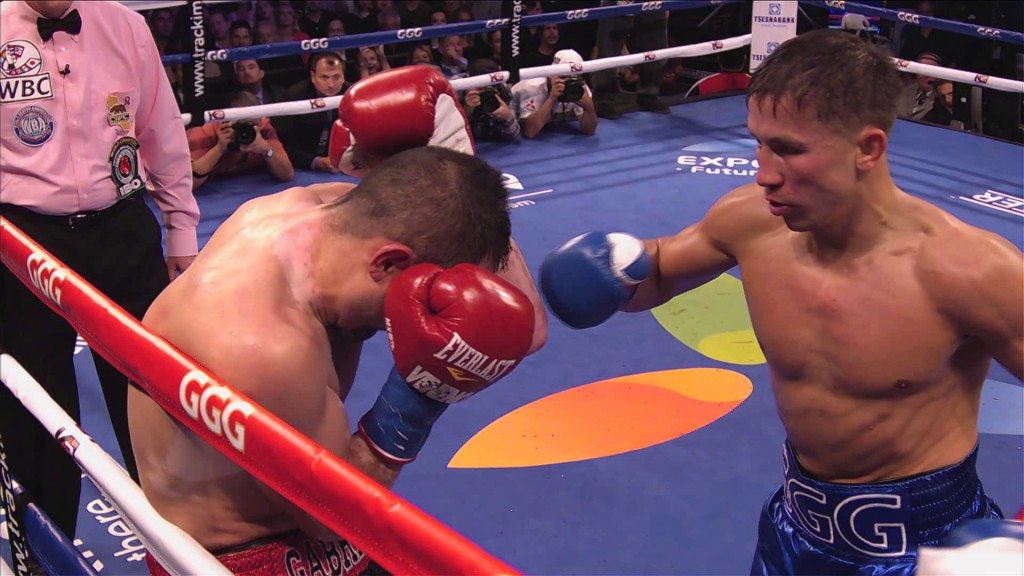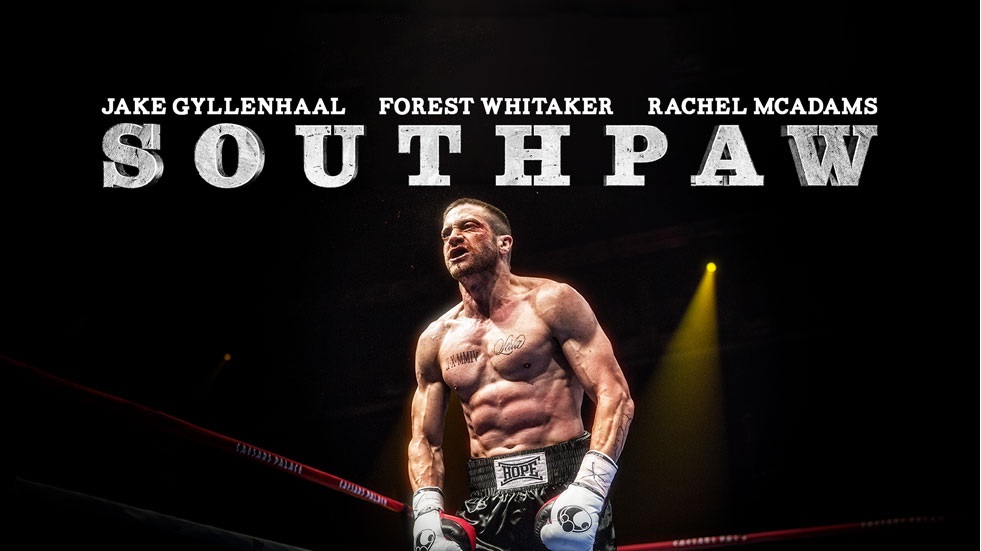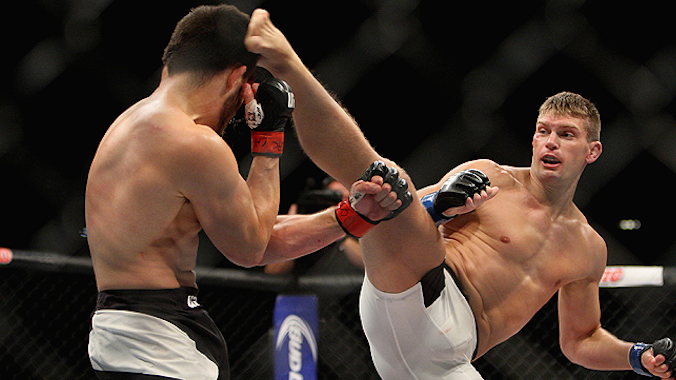
A Cuban hook is quite simply a lead hand overhand punch.
But that answer isn’t satisfying is it? It’s like if your friend tries to set you up on a date and when you ask for details he just says, “She’s a girl”. The Cuban hook is known among combat pundits but the fact is it’s exceedingly rare to see in actual competition. In fact, I almost called it an “overhand left hook” because the few fighters who I’ve seen use it are orthodox.
But why is that?
For starters, lead hand punches are more difficult to develop because it is usually the “off-hand” (the hand not used in daily activities) aka generally placed in in front. The off-hand is generally weaker and more inaccurate due its comparatively inferior musculature and dexterity. Additionally, the position of the lead hand means that the hips cannot rotate as far to generate easy power. Have a novice fighter throw combinations on mitts and even though their lead hand is closer, the difference is power and accuracy will be noticeable.
But specifically because of the lead hand’s distance to the opponent, fighters who do take time to develop it into a weapon are disproportionately rewarded. Georges St. Pierre simply developed a dexterous jab and essentially ruled an entire division with it. Mark Hunt and Dan Hardy are great strikers in their own right but their beautiful lead hooks have toppled many an opponent.
The overhand lead hook is even rarer because not only does a fighter have to train to generate power on a lateral axis but on a vertical axis as well. The sheer distance to the target and the number of muscles involved in making a rear hand punch reach its target means that’s pretty hard not to throw an overhand right (watch Stephen Bonnar vs. Forrest Griffin if you don’t believe me).
The best example of how to generate vertical power on the Cuban Hook is from boxing. Luckily enough, the fighter who displayed this beauty happens to be my favorite boxer Gennady Golovkin. In the second round of his fight with Marco Antonio Rubio, Golovkin landed a chopping Cuban hook to the top of his opponent’s head that crumpled him.
By all accounts Golovkin threw an overhand left starting from no lower than his waist and minimal rotation of the trunk yet Rubio was badly hurt. The trick to power of the Cuban hook is in the “snap” to bring it downwards. Golovkin uses a bowling ball motion to smoothly bring his hand above shoulder level but the power and impact comes from the quick contraction of his pectoral muscles combined with gravity to accelerate his first over Rubio’s guard. Take special note of his “palm-down” Eastern European style hook that ensures that his knuckles collide with Rubio’s temple.
The Cuban Hook turned a regular lead hook into a punch that circumvented Rubio’s right hand and hit him from a blind angle. No wonder the poor man crumpled!
The problem is that mixed martial artists have to worry about the takedown. As Anthony “Rumble” Johnson showed us in his title bid, overhand punches are extremely susceptible to being ducked, at which point a grappler has all the advantage. So generally speaking it is the shorter fighters in divisions that develop great overhand punches and because of the height of their opponents, the punch connects before the downward trajectory can begin.
So while I have yet to see a textbook Cuban Hook like Golovkin, there are still examples of effective overhand lead hooks in MMA. A decent example is Mark Hunt’s counter left against Check Kongo. The Frenchman fired a right straight which Hunt slipped and then knocked him down with a left hook.
Kongo is six inches taller than Hunt, so how did the left hook connect? Because of the asymmetrical stance of a martial artist, when Hunt bends “backwards” away from Kongo’s punch he is actually bending towards his own right side which raises his left shoulder. As a result, the left hook he throws automatically travels over Kongo’s shoulder and down into his jawline.
But the best example is KJ Noons in his first fight with Nick Diaz. Noons had been busting up Diaz with body shots and cracked him with a solid knee when the latter shot for a takedown. With a little over a minute remaining in the first round, Noons pulled out this beauty.
Similar to Hunt’s left hook, Noons produces the downward trajectory not by swinging his arm (ala Golovkin) but bending to his right. Unlike Hunt, Noons had a far less pronounced height disadvantage (2 inches vs. 6 inches) against his opponent so we can clearly see the downward trajectory of his hook as well as the advantages it offers. Nick Diaz tucked his chin and threw a short, crisp lead hook to counter Noons in a way that had his lead shoulder cover his jaw line. If Noons had thrown a traditional hook, it would have bounced off Diaz’s arm or shoulder and he possibly would have eaten the counter. Instead his hook traveled over his opponent’s shoulder for a clean connection while his bending at the waist protected him from the counter.
The Cuban Hook isn’t the fanciest punch and it is extraordinarily rare. But it’s a punch that more fighters should develop because it is absolutely devastating when landed.















